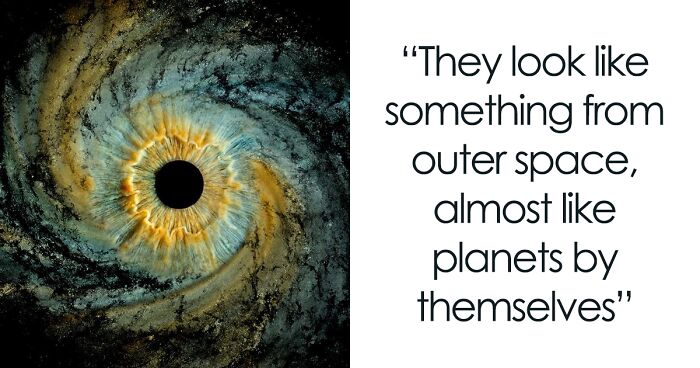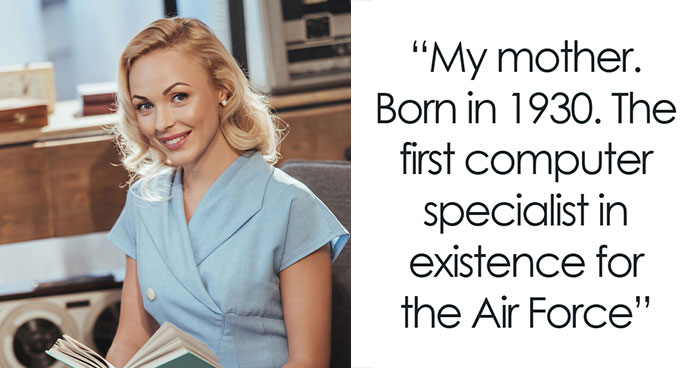
The Complex Business Of Iris Photography Is Capturing The Beauty Of The Human Eye In Immense Detail
Interview With ExpertHave you ever seen the entire universe in someone’s eyes? “It’s the eye contact that moves people,” said explorer and National Geographic Photo Ark founder Joel Sartore, and I have to agree with him. It takes guts to hold a deeper gaze, I guess because it’s the closest we can get to touching someone’s soul.
Sacred, mysterious, destructive, melancholy or absent: the expressions of our eye have fascinated everyone throughout centuries. Thanks to new technology, stunningly detailed macro images can finally unveil the deepest parts of them. Many companies around the globe are inviting us to discover those unique, colorful galaxies hidden inside our own eyes and Irisphoto is one of them.
More info: Irisphoto
Photographers from all around the world are creating different captivating artworks by taking close-up photos of the eyes
Image credits: Irisphoto
Image credits: Irisphoto
Image credits: Irisphoto
Image credits: Irisphoto
Mitchel Zeer started Irisphoto after studying photography and psychology. Fascinated with macro photography and manipulation of lighting, he created Iris Photo Box – a mini studio to capture the beauty of the iris. Later on, joined by his brother Braden, they expanded the business to multiple locations across Australia, capturing the uniqueness of thousands of people.
“Everybody’s eye is different. Our eyes are more unique than our fingerprints. Especially when we get this close, we can see all of the detail, all of the different colorations. People generalize their eyes with one color but it’s rare that there’s actually just one color in there,” explained Mitchel.
“Once the eye is illuminated, we can capture the detail and capture the depth within the iris itself. And then, of course, with a very very powerful camera, very good lens – all the rest,” he added. Then, just in a matter of minutes, the eye is printed out to the size of people’s choice.
With the brand’s footprint growing in Australia, the franchise has also been booming in the USA and Canada.
Iris photography is the new trend in professional portraits that is rapidly spreading around the globe
Image credits: Irisphoto
Image credits: Irisphoto
Image credits: Irisphoto
Image credits: Irisphoto
“I used to think people had just green, brown, or blue eyes,” said Andriana from Bulgaria, who runs Moonlight Photography. “But with these pictures you can really see all the different lines and areas of the eye, everyone really is unique. I find them truly beautiful and fascinating. They look like something from outer space, almost like planets by themselves.”
She found out about the iris photography trend a few months ago in a big international business fair. “It is becoming more in demand here too, so I thought I’d give it a go and it is proving popular with people wanting a different family portrait,” explained Andriana.
Through macro photography, she makes the eyes look like some kind of planets, yin and yang or connected like wheels on a bike.
Image credits: @akiufotografija
Image credits: @akiufotografija
Martas Tankevičius from Lithuania took the idea of iris photography from an art fair in Berlin while traveling with his fiancée.
“We were intrigued by many people gathering at the back of one of the tents. When we got closer, we saw a sign that said ‘Eye Photography’. They were taking photos there of people’s irises. We were truly impressed and I remember saying to Kamilė (my fiancée) ‘That’s so great! It would be a very good idea to do it in Lithuania’,” Martas shared in an interview with Bored Panda.
The couple agreed that it was a great idea, yet somehow completely forgot about it when they came back home after their vacation. Only a month later, when Martas was editing footage for a video vlog from Berlin, he saw the eye photography exhibit again and then reminded Kamilė of the idea. Soon after, they finally began developing the project further.
Asked about what was the most special eye they’d ever had a chance to photograph, he told us it was one that had been damaged by glass. “Half of the iris was simply not there, instead there was a void. The client told us that while working with the glass, he got a piece of it into his eye, but after a successful operation, he managed to save 50% of the vision in that eye!” shared Martas.
“The uniqueness of the eyes shows and tells us the uniqueness of each client’s life: all the different patterns are related to human experiences and health, therefore each person has a unique eye composition! For us, the eyes are so special because they say so much more than any words ever could, and there’s not even a single one the same anywhere in the world!” he added.
New technologies allow photographers to capture the depth within the iris itself in an ultra-detailed way
Image credits: Irisphoto
Image credits: Irisphoto
Named after the Greek goddess of the rainbow, the iris controls the amount of light that enters the eyes and also determines their color. There’s research showing that as many as 16 different genes could be responsible for eye color in humans; however, the main two are OCA2 and HERC2, and both are based in chromosome 15.
New studies unveiled that with approximately 79% of people, brown is the most common color, while green with 2% and grey with less than 1% are the rarest among the entire human population.
In 1893, a Hungarian scientist named Ignaz Peczely (1826–1911) produced the first known anatomically accurate drawing of a human iris. At the time, he claimed that the unique features of an iris can help to detect disease or weakness in the body. What is even more amazing is that Peczely had discovered this link between iris features and health at just 11 years old! In later years, he produced a full map of the ridges of the human iris and paired them with specific medical issues.
In the late 1800s, photography was not yet good enough to produce iris photographs like the ones available commercially today, though images were made for identification purposes. For example, M. Alphonse Bertillon (1853–1914), a French police officer and researcher, observed that everyone’s ‘iris-print’ is as unique as their fingerprint; therefore, in 1886, he suggested that irises could be used to catch repeat criminal offenders.
Nowadays technology finally allows photographers to capture the eye with stunning clarity and detail, so it’s no surprise that it is becoming more and more popular around the globe to capture the unique patterns and colors of the human iris and transform the results into beautiful works of art.
Image credits: American Academy of Ophthalmology
Image credits: Alphonse Bertillon
Another magnificent example of capturing people’s uniqueness through the eyes could be one of the greatest French living photographers, Francis Giacobetti, and his enchanting exhibition of triptychs named VISION.
Giacobetti has been making these triptychs for the past 12 years and to date, he has photographed 150 famous people from around the world, including Nelson Mandela, the Dalai Lama, Aung San Suu Kyi, Luciano Pavarotti, Stephen Hawking, Mikhail Gorbachev, Buzz Aldrin and others. The exhibition is composed of giant pictures of black and white portraits of faces, hands and colored irises. “I wanted my record of special people, deeply intelligent people, to be more than just a sequence of conventional pictures – a single image, snap! – no, I wanted them to be… a meditation,” said Giacobetti. “I plan to make a total of 300 portraits and I hope the project will be completed for the turn of the century. It has ended up as a kind of millennium project, although that was not the original intention.”
“I invented my own device for taking photographs of the eyes,” explained Giacobetti. “It is a little secret, but what it does, more or less, is to shine light across the side of the eyes rather than directly into them. In this way, we can see the pattern of eyes in relief, which is not possible if you shine light directly into them. Of course, this is not some sort of optician’s device. My pictures have nothing to do with science, medicine or anatomy; my interest is only in their beauty.”
This exceptional exhibition was presented for the first time at the Procuraties on the San Marco Square Venezia on 18th of November last year and now will travel the world over 5 years, starting with Paris.
Being as unique as our fingerprints, irises are becoming a new way to capture the essence of the soul
Image credits: Francis Giacobetti / Fidel Castro
Image credits: Francis Giacobetti / Dalaï Lama
Image credits: Francis Giacobetti / Louise Bourgeois
Image credits: Francis Giacobetti
How beautiful it is that there are over 7 billion people and not even a single eye is the same. Marina Abramović spent 8 hours a day, 6 days a week for nearly 3 months staring into the eyes of over 1,500 strangers at the Museum of Modern Art in New York, as part of her 2010 performance, The Artist Is Present.
“There’s so many incredible things when you look in somebody’s else’s eyes,” the artist shared at the time. It’s the sense of aliveness, the real deep presence that makes gazing into each other’s eyes so special: like suddenly in silence, yet so loudly, two galaxies would collide.
Dragan Tapshanov once said that “photography is about capturing souls”; therefore, what could be a better way to do so than through the deep gaze of the eye?
Poll Question
Thanks! Check out the results:
Another fascinating article, Eglė. Thanks so much for always providing us with fabulous information!
Another fascinating article, Eglė. Thanks so much for always providing us with fabulous information!

 Dark Mode
Dark Mode 

 No fees, cancel anytime
No fees, cancel anytime 




































































59
8